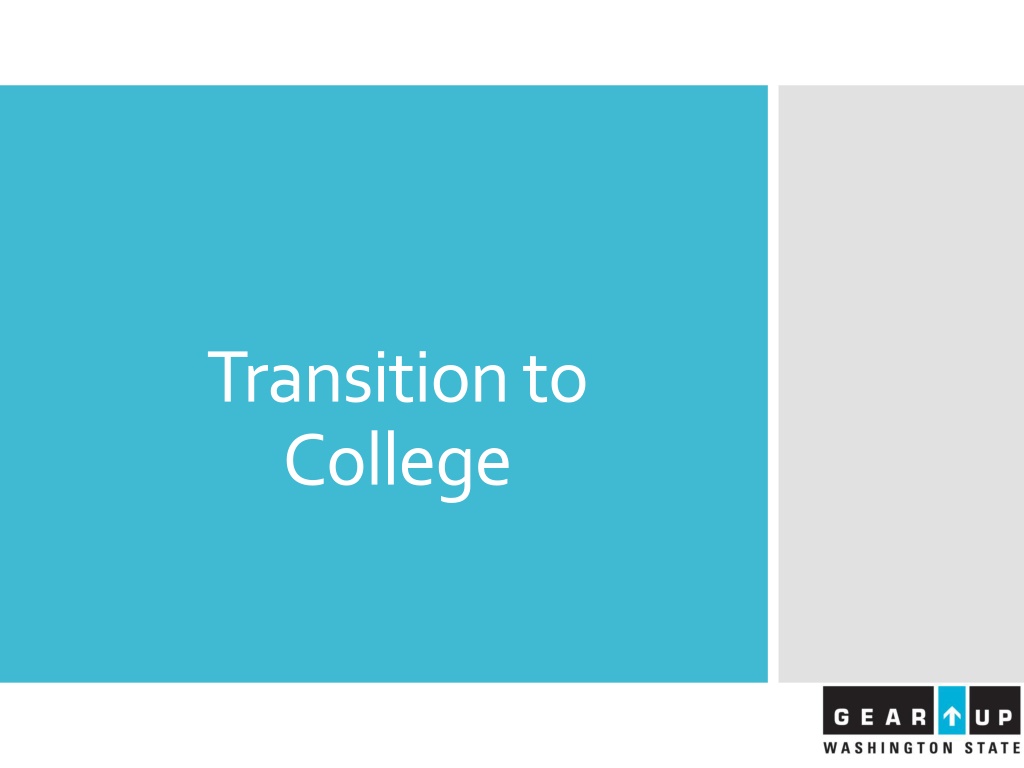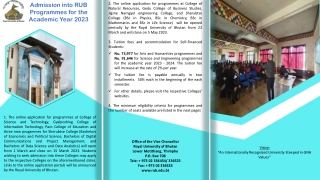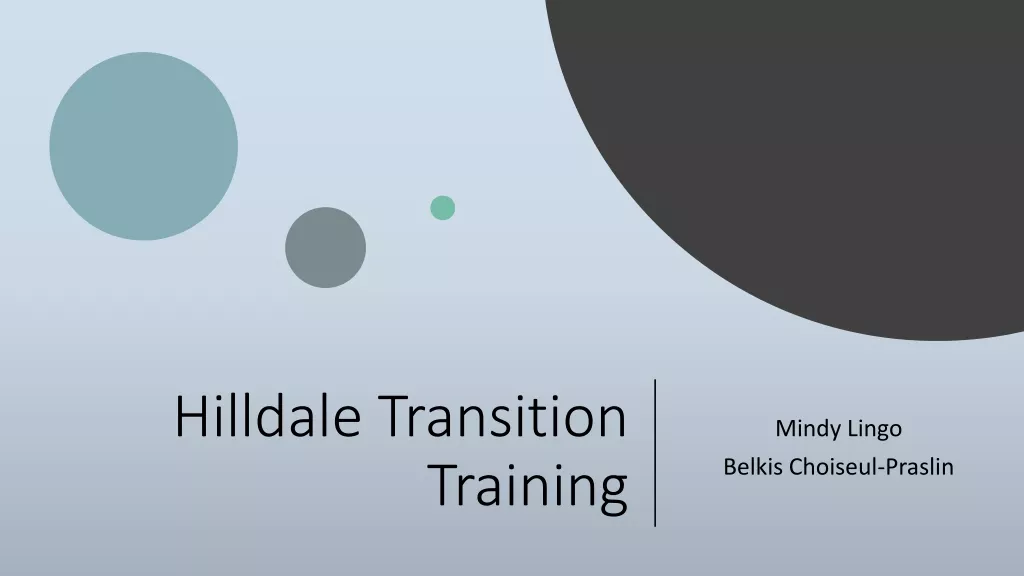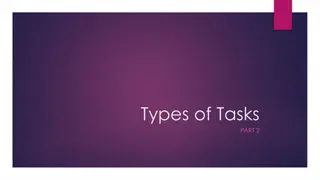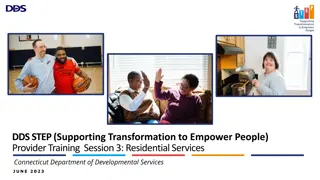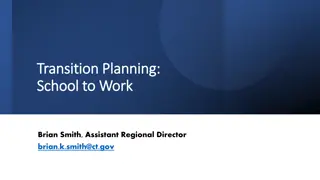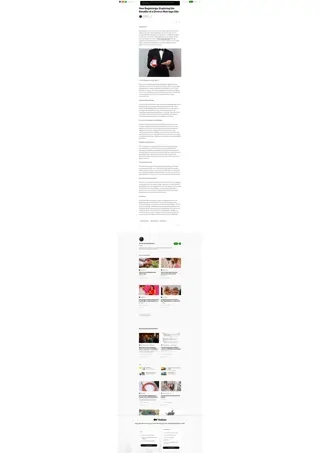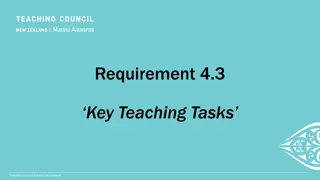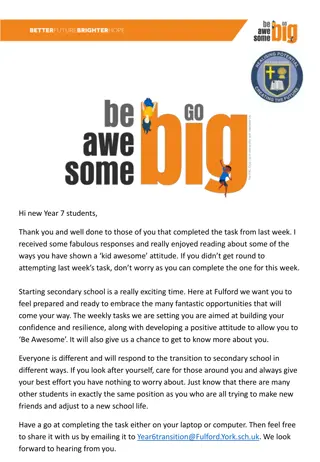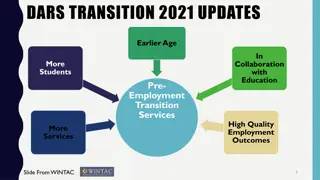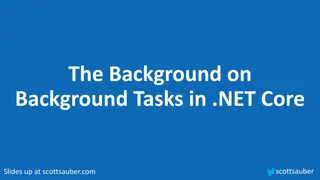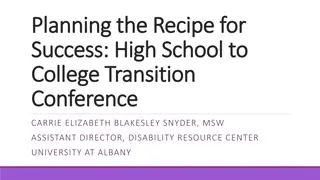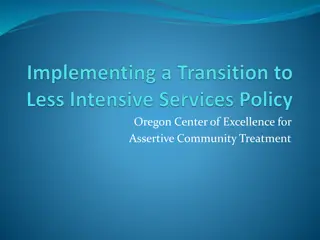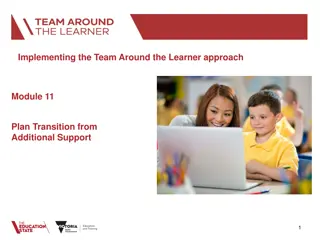Navigating the Transition to College: Tasks, Challenges, and Support
Completing tasks like financial aid applications and class selections can be daunting for students transitioning to college. Common challenges like academic adjustments and time management often arise in the first year. Learn how programs like GEAR UP can provide support for a successful college transition.
Download Presentation

Please find below an Image/Link to download the presentation.
The content on the website is provided AS IS for your information and personal use only. It may not be sold, licensed, or shared on other websites without obtaining consent from the author. Download presentation by click this link. If you encounter any issues during the download, it is possible that the publisher has removed the file from their server.
E N D
Presentation Transcript
Transition to College
Introductions Our GEAR UP Team includes:
oWhen we say college, we mean any type of education or training after high school. We also use the terms postsecondary education and postsecondary training . oThere are many options for students after high school, including apprenticeships, military, on-the- job training programs, community college certificates, two-year degrees, and four-year degrees. oThe term college includes all of these things. What do we mean when we say college?
Two-year financial aid awards College orientation Summer Overview Scholarship awards
Summer melt refers to a phenomenon: when seemingly college-intending students fail to enroll at all in the fall after high school graduation. Summer Melt
Between Senior Signing Day and the fall, a number of tasks still must be completed before students attend. For students whop are the first in their family to go to college, these tasks can be challenging because students no longer have access to school counselors and do not know how to navigate this new system. Why Do Students Melt?
The tasks that college-intending students must complete during the summer after graduation are numerous. Even seemingly simple tasks can become significant barriers to timely college enrollment. Common summer tasks include attending orientation; completing financial aid and other paperwork; paying for tuition, room and board, and student fees (including health insurance); taking placement exams; and selecting classes. GEAR UP Can Help GEAR UP can provide students with assistance with these tasks and help your child successfully transition to college.
The first year of college is a time of transition for everyone. Students may experience these common challenges: Academic Social Independence Time Management Financial Common Challenges
Free tutoring Writing centers Career counseling Academic advising Mental health counseling Health care Resources & Support Services in College
Encourage your child to review: Handout: Make Your College Plans a Reality. This handout is a summary of key tasks for college-going students to complete during the summer. These tasks apply to many postsecondary institutions. Strategies 10
Review A Family Guide: Supporting Your Child After High School. Set Realistic Expectations. Talk about what knowledge, attitudes, and behaviors are needed to be successful in college. Share that many students, especially special pops and first-gen students, experience self-doubt and the dreaded imposter syndrome. Discuss common challenges and share how students can find support on campus. Tips
Support for Transitions. Strongly encourage your child to participate in Summer Bridge Programs and First Year Experiences. TRiO SSS is also a support program that provides services supporting college success. Also, CAMP, Passport to College, and more can be beneficial to migrant students and foster alum respectively. On Campus Support Services. Encourage your child to: Learn how to access tutoring and academic support services. Register for disability services, if applicable. Locate and learn about TRIO program, if available. Locate and learn about mental health counseling services. Locate and learn about on campus food pantry, clothing bank, and other supports. Tips
Attend class. Go to office hours. Get involved on campus. Advocate for yourself. Tips
Up Next will provide students and families across the country with personalized information and encouragement to complete important college and financial aid milestones and tasks. Up Next Mobile Messaging Campaign
SDP Summer Melt Handbook: A Guide to Investigating and Responding to Summer Melt. This guide is designed by Ben Castleman et al. at the Center for Education Policy Research at Harvard University. Foster Care Transition Toolkit. The U.S. Department of Education (ED), in partnership with the U.S. Department of Health and Human Services (HHS), the U.S. Department of Housing and Urban Development (HUD), the U.S. Department of Transportation (DOT), the U.S. Department of Labor, (DOL), and youth and practitioners involved in the child welfare system, developed this toolkit to help youth access the resources needed to successfully transition into adulthood, continue on to postsecondary education, and meaningful careers. Preparing Students with Disabilities for Postsecondary Education: A Resource Guide for Use with GEAR UP School Staff. Designed to assist those who work with high school students with disabilities who plan to continue their education in postsecondary institutions, including vocational and career schools, two- and four- year colleges, and universities. Additional resources Supporting Transgender Students: College Admissions & Financial Aid. A Resource Guide for College Access Professionals. Designed to assist college access professionals who work with high school students who identify as lesbian, gay, bisexual, transgender, or queer (LGBTQ). The information provided has an emphasis on supporting transgender youth who plan to continue their education at a postsecondary institution. TransitionYear.org. (Family and Student Guides available). Emphasis on supporting students with a mental illness in the transition to college. College Access and Success for Students Experiencing Homelessness: A Toolkit for Educators and Service Providers from NAEHCY.
Contact information: [insert counselor/advisor/mentor name] Phone: (xxx) xxx-xxxx E-mail: xxxx@xxxx.xxx Thanks for coming
